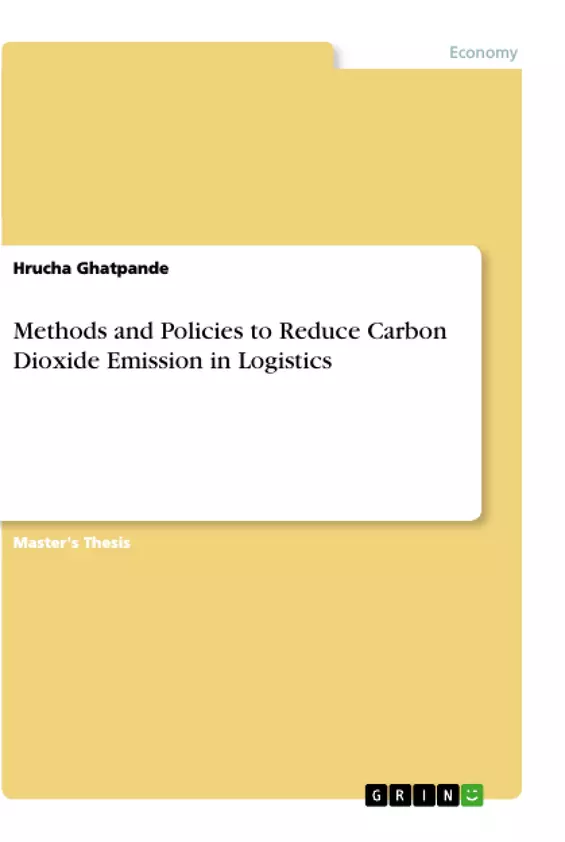The report is focused on carbon dioxide emissions in the logistics industry. It evaluates some segments of the logistics industry that how carbon dioxide emission is takes place in the logistics operations. Global warming and climate control elements are turning into a genuine worldwide concern. The enactment is turning into a fundamental plan to control the measure of carbon dioxide discharge that may impact the entire world in upcoming years. To figure out this issue, the research is conducted to investigate the methods and policies which support the logistics operation to lessen or control the carbon dioxide emission. The report has some insight that how various logistics factors are responsible to influence the level of carbon dioxide. Furthermore, various opportunities to reduce transportation as well as warehouse-related carbon dioxide emission are identified. With the analysis of different industries, the most promising and feasible methods for logistics operations are determined such as increasing load factor, modal shift, alternative fuels, electric forklifts. In addition to this, analysis of environmental policies is also determined namely carbon emission trading, carbon tax. The impacts on organizations after applications of studied methods and policies have been also reviewed. The research outcome has an overall contribution to green logistics management.
Inhaltsverzeichnis (Table of Contents)
- INTRODUCTION
- Research Background
- Problem Statement
- Research Objectives
- Scope And Limitations Of The Research
- Structure Of Thesis
- LITERATURE REVIEW
- Introduction
- Green Logistics
- Carbon Dioxide Emission
- Factors Influencing CO₂ Level Through Logistics
- Structural And Operational Factors
- Commercial And Functional Factors
- Background Of Methods And Policies
- Methods To Reduce Carbon Dioxide Emission In Transportation Management
- Shipping Route
- Chargeable Weight
- Choice Of The Transportation Mode
- Efficiency Of Transport
- Other Methods
- Alternative Methods To Reduce Carbon Dioxide Emission In Warehouse Management
- Renewable Energy
- Material Handling Equipment
- The impact of carbon dioxide emissions on the logistics industry
- Methods to reduce carbon dioxide emissions in transportation and warehousing
- The effectiveness of various environmental policies in reducing emissions
- The impact of these methods and policies on organizations
- The contribution of green logistics management to sustainability
Zielsetzung und Themenschwerpunkte (Objectives and Key Themes)
This research aims to investigate the methods and policies used to reduce carbon dioxide emissions in the logistics industry. By analyzing various logistics factors, the study seeks to identify opportunities to minimize transportation and warehouse-related emissions.
Zusammenfassung der Kapitel (Chapter Summaries)
The introduction establishes the research background, problem statement, objectives, scope, and limitations of the study. It sets the stage for the subsequent chapters, highlighting the importance of reducing carbon dioxide emissions in the logistics sector.
The literature review delves into the concepts of green logistics and carbon dioxide emissions, examining the factors influencing CO₂ levels in logistics operations. It explores various methods and policies aimed at reducing emissions, focusing on transportation and warehouse management.
Schlüsselwörter (Keywords)
The main keywords and focus topics of the research include carbon dioxide emission, transportation emission, warehouse emission, green logistics, environmental tax policy, environmental taxes, and carbon footprint.
- Citar trabajo
- Hrucha Ghatpande (Autor), 2021, Methods and Policies to Reduce Carbon Dioxide Emission in Logistics, Múnich, GRIN Verlag, https://www.grin.com/document/1132699



